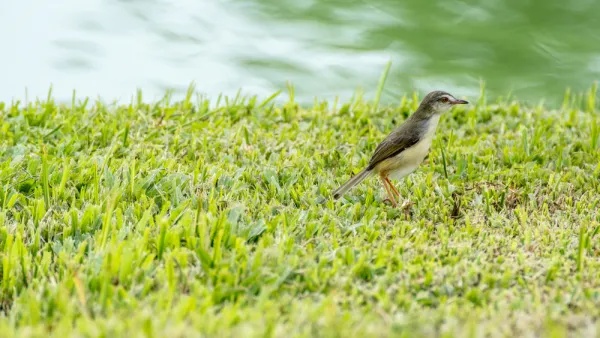Evolutionary biologist David Sloan Wilson is trying to understand how natural selection works at various levels. His new lab: the city of Binghamton, New York.
"Wilson, who works at the State University of New York in Binghamton, has been a prominent figure in evolutionary biology since the 1970s. Much of his research has focused on the long-standing puzzle of altruism - why organisms sometimes do things for others at a cost to themselves. Altruism lowers an individual's chances of passing its own genetic material on to the next generation, yet persists in organisms from slime moulds to humans. Wilson has championed a controversial idea that natural selection occurs at multiple levels: acting not only on genes and individuals, but also on entire groups. Groups with high prosociality - a suite of cooperative behaviours that includes altruism - often outcompete those that have little social cohesion, so natural selection applies to group behaviours just as it does on individual adaptations1. Many contend that group-level selection is not needed to explain altruism, but Wilson believes that it is this process that has made humans a profoundly social species, the bees of the primate order.
Wilson originally built the case for multi-level selection on animal studies and hypothetical models. But eight years ago, he decided to come down from the ivory tower and take a closer look at the struggle for existence all around him. A city - with dozens to hundreds of distinct social groups interacting and competing for resources - seemed to Wilson the ultimate expression of humanity's social nature. If prosociality is important in the biological and cultural evolution of human groups, he reasoned, he should be able to observe it at work in Binghamton, a city of about 47,000 people."
He's trying various efforts to show that cooperation and prosociality can have positive effects on the city's wellbeing.
FULL STORY: Evolution: Darwin's city

National Parks Layoffs Will Cause Communities to Lose Billions
Thousands of essential park workers were laid off this week, just before the busy spring break season.

Retro-silient?: America’s First “Eco-burb,” The Woodlands Turns 50
A master-planned community north of Houston offers lessons on green infrastructure and resilient design, but falls short of its founder’s lofty affordability and walkability goals.

Delivering for America Plan Will Downgrade Mail Service in at Least 49.5 Percent of Zip Codes
Republican and Democrat lawmakers criticize the plan for its disproportionate negative impact on rural communities.

Test News Post 1
This is a summary

Test News Headline 46
Test for the image on the front page.

Balancing Bombs and Butterflies: How the National Guard Protects a Rare Species
The National Guard at Fort Indiantown Gap uses GIS technology and land management strategies to balance military training with conservation efforts, ensuring the survival of the rare eastern regal fritillary butterfly.
Urban Design for Planners 1: Software Tools
This six-course series explores essential urban design concepts using open source software and equips planners with the tools they need to participate fully in the urban design process.
Planning for Universal Design
Learn the tools for implementing Universal Design in planning regulations.
EMC Planning Group, Inc.
Planetizen
Planetizen
Mpact (formerly Rail~Volution)
Great Falls Development Authority, Inc.
HUDs Office of Policy Development and Research
NYU Wagner Graduate School of Public Service





























